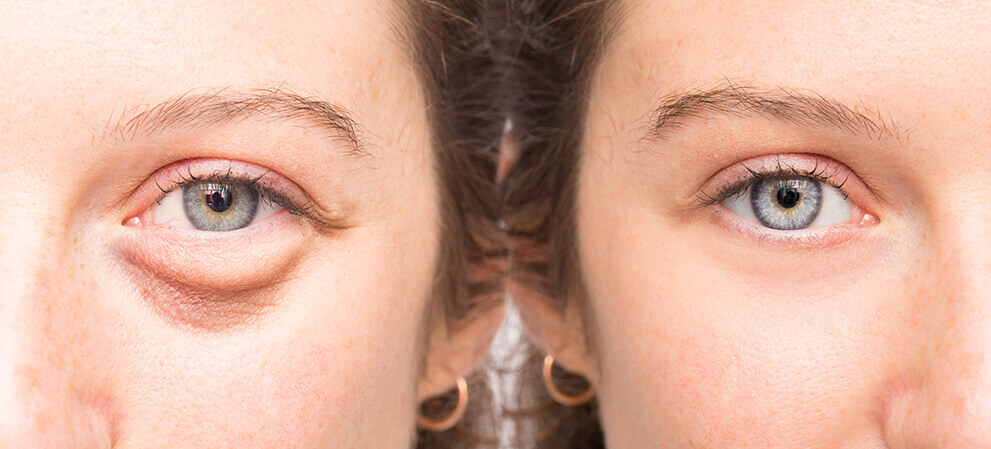Looking for information on this type of facial surgery? There may be numerous cosmetic reasons you are asking questions about eyelid surgery. But here at Four Seasons Eye Care we are concerned with your vision and not necessarily the cosmetic reasons that this treatment might be considered.

There are a couple specific conditions we will evaluate during your annual eye examination.
Drooping eyelids
Do you fell that you always look tired? Do your eyes feel tired and do you suffer from frequent tension headaches? This can be caused when the muscles that lift the eyelid are not strong enough to do so properly and may require surgical repair. This condition is known as ptosis. This is sometimes known as Lazy eye. It becomes medically necessary to perform a ptosis repair when the droopy lids obstruct the peripheral vision.
Eye Lifts
With age you may experience sagging of the lower eyelid causing bags under eyes. You may also experience excessive skin on the upper eyelid that begins to droop and sag. Once again these conditions create a tired, fatigued, and older appearance. Nobody wants to look old, but when these conditions begin to significantly affect your vision we need to take note. When this occurs a procedure, called blepharoplasty, can be deemed medically necessary and is covered by most insurance. This is a low risk surgery will remove the excess skin and fat in an effort to restore your vision and as a bonus create a more youthful and refreshed look.
Sagging of lower lid
A sagging of the lower eye lid, in an outward direction, is a condition known as Ectropion. As the lid sags away, the eye is exposed and causes symptoms of dryness and excessive tearing.
Common causes of ectropion include:
- Age-related tendon laxity
- Trauma
- Scarring
- Facial nerve paralysis associated with Bell’s Palsy.
The sagging of the lower eyelid in the inward direction is known as Entropion. When this occurs it may be causing the lashes to rub against the cornea (the clear surface of the eye). In these cases the patient might be experiencing symptoms of eye pain such as excessive tearing, redness and irritation. This is caused from the rubbing lashes.
Treatment typically begins with lubrication drops or ointments. This will definitely help with the irritation as a short-term solution. The only long-term solution is a surgical one. Left untreated, these conditions could lead to permanent damage to the cornea and some vision loss. Surgery is the only corrective method.


